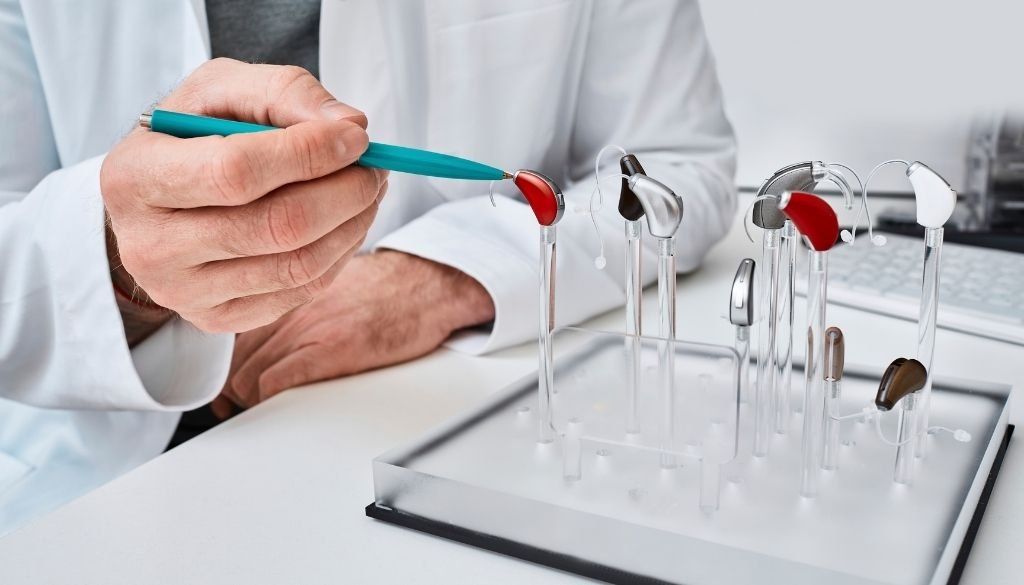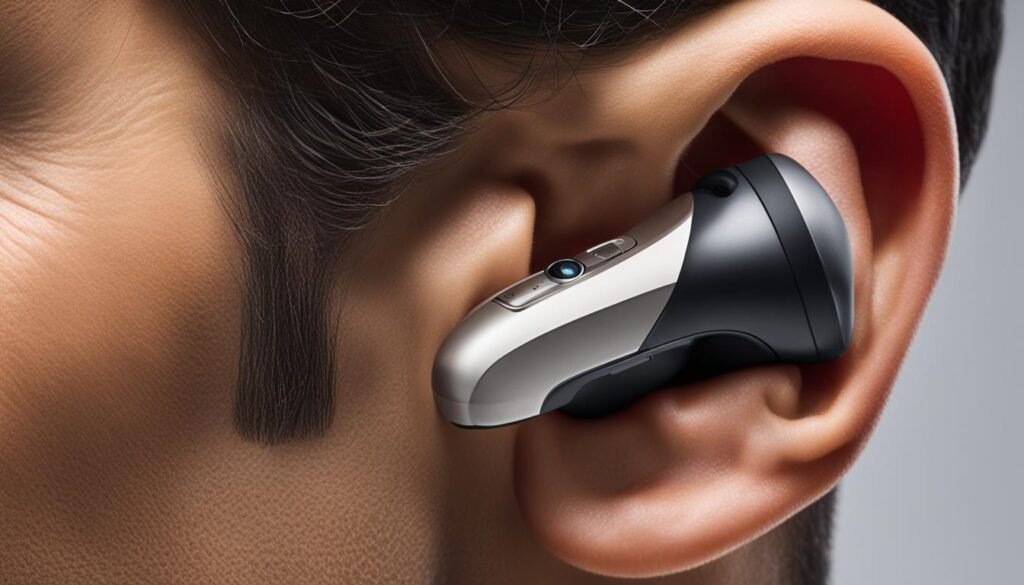“What is the Best Hearing Aid for Clarity of Speech?” This question is pivotal for those experiencing hearing loss and seeking to regain a clear connection with their surroundings. In this comprehensive guide, we delve deep into the crucial factors that should guide your search for the ideal hearing aid. We cover the importance of understanding your unique hearing requirements, the necessity of consulting with an audiologist, and the variety of hearing aids available in the market.

Additionally, we’ll explore the latest technological advancements in hearing aids that specifically enhance speech clarity. By providing detailed insights into each of these areas, this article aims to equip you with the knowledge needed to make an informed decision about the best hearing aid for your needs, ensuring you can effectively communicate and fully engage with the world around you.
Key Takeaways
- Understanding your specific hearing needs is crucial when choosing a hearing aid for clarity of speech.
- Consulting with an audiologist can help you determine the features and functionalities that best suit your requirements.
- There are different types of hearing aids, including behind-the-ear (BTE), in-the-ear (ITE), receiver-in-canal (RIC), and completely-in-canal (CIC) models.
- Technological advancements in hearing aids, such as noise reduction and connectivity options, can greatly improve the auditory experience.
- Choosing the best hearing aid for clarity of speech can enhance your overall quality of life and improve your ability to connect with others.
Understanding Your Hearing Needs
Before embarking on your journey to find the best hearing aid for clarity of speech, it’s crucial to start by understanding your specific hearing needs. Several factors play a role in determining the right hearing aid for you, including the type and severity of your hearing loss, as well as your lifestyle and preferences.
When considering the type and severity of your hearing loss, it’s important to consult with an audiologist who can perform a comprehensive evaluation. This evaluation will assess the extent and nature of your hearing loss, providing valuable insights into the specific frequencies and sounds you struggle with. By understanding the nuances of your hearing loss, you can choose a hearing aid that addresses your unique needs and maximizes speech clarity.
Your lifestyle and preferences are also essential factors to consider when choosing a hearing aid. Think about your daily routines, social activities, and environments you frequently encounter. Are you often in noisy environments or quiet settings? Do you enjoy outdoor activities or prefer indoor gatherings? By identifying your lifestyle and preferences, you can select a hearing aid that suits your individual needs and enhances your overall auditory experience.
Remember, finding the best hearing aid for clarity of speech is a highly personalized process. It’s crucial to work closely with your audiologist to identify the features and functionalities that will best suit your lifestyle and preferences.
By understanding your hearing needs, including the type and severity of your hearing loss, as well as your lifestyle and preferences, you can start your journey toward finding the perfect hearing aid for clarity of speech. Consulting with an audiologist will provide you with the guidance and expertise needed to make an informed decision. Let’s move on to explore the different types of hearing aids available in the next section.
Types of Hearing Aids
When it comes to finding the best hearing aid for clarity of speech, it’s important to understand the different types available. Here, we explore the four main types of hearing aids: behind-the-ear (BTE), in-the-ear (ITE), receiver-in-canal (RIC), and completely-in-canal (CIC) models.
1. Behind-the-ear (BTE) Hearing Aids
BTE hearing aids are worn behind the ear and are suitable for a wide range of hearing loss types and severities. They consist of a small device that sits behind the ear and a molded earpiece that fits inside the ear canal. BTE hearing aids are known for their durability, power, and ability to accommodate various technological features.
2. In-the-ear (ITE) Hearing Aids
ITE hearing aids are custom-made to fit within the outer portion of the ear. They are larger than BTE hearing aids but provide enhanced sound amplification, making them suitable for individuals with mild to severe hearing loss. ITE hearing aids are discreet and easy to handle, offering comfortable wear and convenient accessibility to controls.
3. Receiver-in-Canal (RIC) Hearing Aids
RIC hearing aids feature a slim design with a small device placed behind the ear and a receiver or speaker placed directly into the ear canal. They are known for their comfortable fit and natural sound quality. RIC hearing aids are suitable for mild to moderate hearing loss. They provide excellent amplification while minimizing occlusion, the sensation of hearing one’s voice as if it’s in a barrel or tunnel.
4. Completely-in-Canal (CIC) Hearing Aids
CIC hearing aids are the most discreet and are custom-made to fit entirely within the ear canal. They offer natural sound quality and are almost invisible when worn. CIC hearing aids are suitable for mild to moderate hearing loss, but they may not have all the features of larger hearing aids due to their size.
Working closely with your audiologist, you can determine which type of hearing aid aligns best with your hearing needs, lifestyle, and preferences. Each type has its advantages, so it’s essential to consider factors such as comfort, visibility, and technological capabilities when making your decision.
Technological Advancements in Hearing Aids
Technological advancements in hearing aids have revolutionized the way we experience sound, particularly when it comes to clarity of speech. These advancements provide a range of features and functionalities that enhance the overall auditory experience. One of the key features is noise reduction, which helps to minimize background noise and improve speech intelligibility even in challenging environments.
Directional microphones are another notable advancement in hearing aid technology. These microphones are designed to amplify sounds coming from the front while reducing sounds from other directions. This helps the wearer focus on the speaker in front and improves speech understanding in noisy situations.
Can hypertension cause hearing loss? Find out more
Feedback cancellation is yet another important technological advancement. It addresses the problem of whistling or feedback sounds that may occur when using hearing aids. Advanced feedback cancellation systems can detect and suppress feedback in real time, ensuring a more comfortable and seamless listening experience.
Furthermore, the connectivity options available in modern hearing aids have opened up a whole new world of possibilities. Many hearing aids now offer wireless connectivity to smartphones and other devices, allowing users to stream audio directly to their hearing aids. This feature enables seamless integration with various communication and entertainment platforms, enhancing the overall listening experience.

Summary:
- Noise reduction technology minimizes background noise, improving speech intelligibility.
- Directional microphones amplify sounds from the front while reducing sounds from other directions, enhancing speech understanding in noisy environments.
- Feedback cancellation systems suppress whistling, or feedback sounds for a more comfortable listening experience.
- Connectivity options allow users to stream audio from smartphones and other devices directly to their hearing aids, expanding the range of communication and entertainment possibilities.
Conclusion
The quest for the best hearing aid for clarity of speech is an important endeavor in reclaiming the joy of sound and reconnecting with the world. By understanding your needs, seeking professional guidance, considering technological advancements, and exploring different types of hearing aids, you can make an educated decision.
Ultimately, finding the best hearing aid for clarity of speech can greatly improve your auditory experience, leading to enhanced communication and a more fulfilling life. The advancements in technology, such as noise reduction, directional microphones, and connectivity options, have revolutionized the way we experience sound.
What does somatic tinnitus sound like? Delve into the specifics of ‘what does somatic tinnitus sound like’ in our in-depth article, offering insights into this unique form of tinnitus and its characteristics.
With the right hearing aid, you can enjoy clearer and more natural speech, whether in crowded environments, during phone conversations, or while watching television. The improved hearing experience empowers you to participate in discussions actively, connect with loved ones, and engage in social activities with confidence.
Remember, finding the best hearing aid for clarity of speech is a personal journey. It may take time and effort, but the result is worth it. By taking control of your hearing health, you can enrich your overall quality of life and fully embrace the world of sound once again.
Frequently Asked Questions
What factors should I consider when looking for the best hearing aid for clarity of speech?
It is important to understand your specific hearing needs, consult with an audiologist, and consider your lifestyle and preferences.
What types of hearing aids are available?
There are different types, including behind-the-ear (BTE), in-the-ear (ITE), receiver-in-canal (RIC), and completely-in-canal (CIC) models, each with unique advantages.
What technological advancements are available in hearing aids?
Today’s hearing aids are equipped with advanced features such as noise reduction, directional microphones, feedback cancellation, and connectivity options to smartphones and other devices.
How can finding the best hearing aid for clarity of speech improve my auditory experience?
By understanding your needs, seeking professional guidance, considering technological advancements, and exploring different types of hearing aids, you can enhance your ability to hear and understand speech, improving your overall auditory experience.
How can finding the best hearing aid for clarity of speech enrich my quality of life?
Clear speech is vital for effective communication and social interactions. By finding the best hearing aid for clarity of speech, you can enhance your ability to connect with others and fully participate in conversations, leading to a more enriching and fulfilling quality of life.



